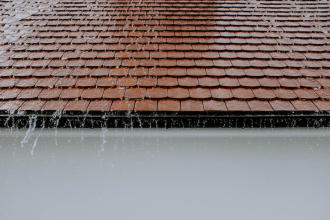In the quest for sustainable living and reduced energy costs, energy-efficient windows have become a hallmark of modern architecture. A significant evolution has taken place in the design and materials of these windows. This enhances their ability to regulate indoor temperatures and minimize energy consumption.
- The Rise of Energy Efficiency in Architecture
- Innovative Technologies Transforming Windows
- Low-Emissivity (Low-E) Coatings
- Insulating Glass Units (IGUs)
- Smart Windows
- Materials Driving Efficiency
- The Role of Building Codes and Regulations
- Environmental Impact and Long-Term Benefits
- Choosing the Right Windows for Your Home
- The Future of Energy-Efficient Windows
- Embracing Energy-Efficient Solutions
As we look at how these advancements have transformed architectural landscapes, the focus increasingly shifts toward innovative technologies and practices that allow for optimal efficiency. For more info on the top window solutions, read on!
The Rise of Energy Efficiency in Architecture
The push for energy-efficient windows began in earnest in the late 20th century. This is driven largely by growing environmental concerns and rising energy costs. Homeowners and architects alike recognized the critical role that windows play in overall energy efficiency.
Not only do windows impact heating and cooling loads, but they also affect natural light penetration and indoor comfort. By implementing top window solutions, properties can substantially lower energy bills. These can enhance the quality of living spaces.
Innovative Technologies Transforming Windows
Energy-efficient windows have evolved. This is because of the incorporation of several innovative technologies over the years. Here are a few key advancements:
Low-Emissivity (Low-E) Coatings
Low-E coatings are thin layers of metal applied to window glass. They reflect heat while still letting in natural light, making homes brighter without getting too hot or too cold. In the summer, they block heat from the sun, keeping indoor spaces cooler. In the winter, they trap warmth inside, reducing the need for heating systems. This helps lower energy bills while still allowing plenty of daylight to enter the home.
Insulating Glass Units (IGUs)
IGUs have two or three layers of glass with a space between them, filled with gases like argon or krypton. These gases slow down heat transfer, keeping indoor temperatures steady. In the winter, they prevent warm air from escaping, while in the summer, they block heat from getting in. This improves energy efficiency and helps reduce heating and cooling costs. IGUs also cut down on outside noise, making homes quieter and more comfortable.
Smart Windows
Smart windows change tint automatically based on sunlight and temperature. Electrochromic glass uses electricity to adjust its shade, while thermochromic glass darkens when exposed to heat. These windows reduce glare, block heat, and improve privacy without needing curtains or blinds. By adjusting to the weather, they help save energy and keep rooms comfortable all day. Smart windows are a modern solution for better light control and energy savings.
Materials Driving Efficiency
The materials used in modern windows have also undergone considerable change. Traditionally, wood was the primary choice due to its aesthetic appeal and insulating properties. Today, however, a variety of materials are utilized, each offering unique benefits. Vinyl, fiberglass, and aluminum clad wood are popular choices because they require less maintenance and offer superior thermal performance.
Vinyl windows, for instance, are known for excellent insulation properties and durability. Fiberglass windows, although initially higher in cost, offer exceptional strength and low thermal expansion, making them ideal in fluctuating climates. Moreover, aluminum-clad windows combine the low maintenance of aluminum exterior with the beauty of wood interiors, offering a balanced solution for modern homes.
The Role of Building Codes and Regulations
As energy efficiency becomes a priority, building codes and regulations are evolving to mandate higher performance standards for windows. In many regions, energy efficiency ratings are a requirement part of new builds and renovations. For example, the Energy Star rating system provides guidelines that help consumers identify energy-efficient products.
Property owners and builders must stay informed about local and national standards when considering window replacement. Incorporating energy-efficient windows not only improves comfort and aesthetics but often entitles homeowners to tax incentives or rebates, making a switch more appealing.
Environmental Impact and Long-Term Benefits
The environmental benefits of energy-efficient windows extend beyond individual homes. According to the U.S. Department of Energy, windows account for about 25% to 30% of residential heating and cooling energy use. By upgrading to energy-efficient windows, homeowners can significantly reduce their carbon footprint.
Furthermore, energy-efficient windows contribute to healthier indoor air quality and enhanced acoustic comfort. These factors improve not only the occupants’ well-being but also the overall value of the property. Resale value can increase significantly, especially in areas where energy efficiency is prioritized.
Choosing the Right Windows for Your Home
When selecting windows, it’s essential to assess the specific needs of your home. Consider factors such as climate, architectural style, and aesthetic preferences. Consulting with an expert is beneficial to ensure that the chosen windows align with your energy goals and the building’s character.
Each type of window has its pros and cons. For instance, while energy-efficient triple glazing can provide superior insulation, it may not be aesthetically suitable for every home. Balancing form and function is vital.
For homeowners considering upgrading their existing windows, exploring options like Window Replacement in San Diego can lead to personalized consultations. These experts can address specific needs and budget considerations. They are even able to highlight the importance of sustainability.
The Future of Energy-Efficient Windows
Energy-efficient windows are getting better as new technology develops. Scientists are working on stronger materials and better designs. This makes windows more efficient and long-lasting. Some new windows generate electricity from sunlight, turning them into mini solar panels. Others have built-in ventilation systems that bring in fresh air without letting heat escape.
As technology keeps improving, windows will save even more energy and provide extra benefits. Homeowners and builders should stay updated on new options to get the best performance from their windows. Choosing the right windows now helps lower energy use. It also prepares homes for future energy-saving advancements.
Embracing Energy-Efficient Solutions
Modern windows are designed to save energy and protect the environment. Choosing energy-efficient windows helps homeowners cut costs and stay comfortable year-round. With so many options available, finding the right one is now easier than ever.
Before buying, it’s important to think about your needs and explore different window types. There are many ways to get helpful information, like talking to experts or reading online guides. Making the right choice means creating a better home while also helping the planet.
For more related topics, check out the rest of our blog!














